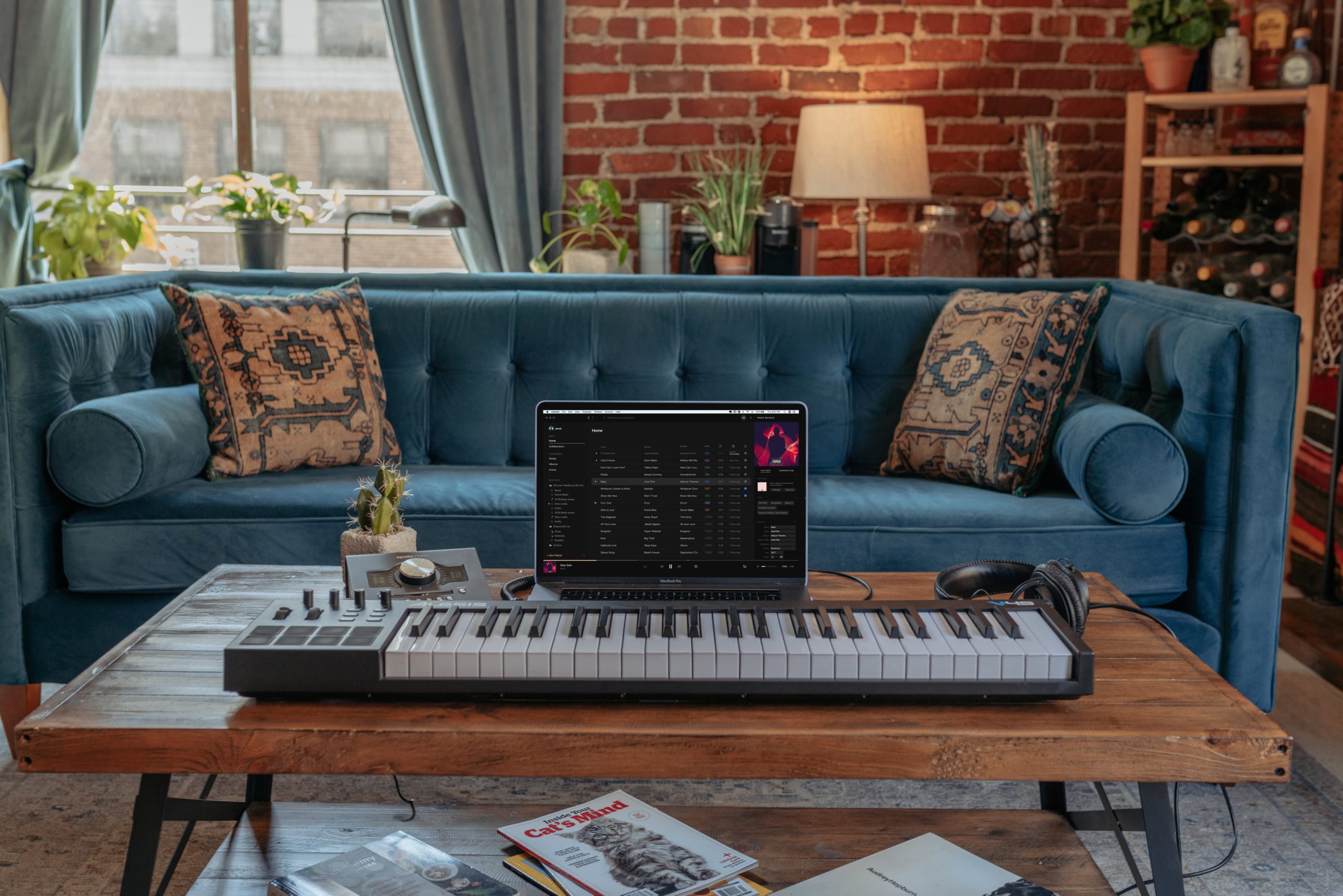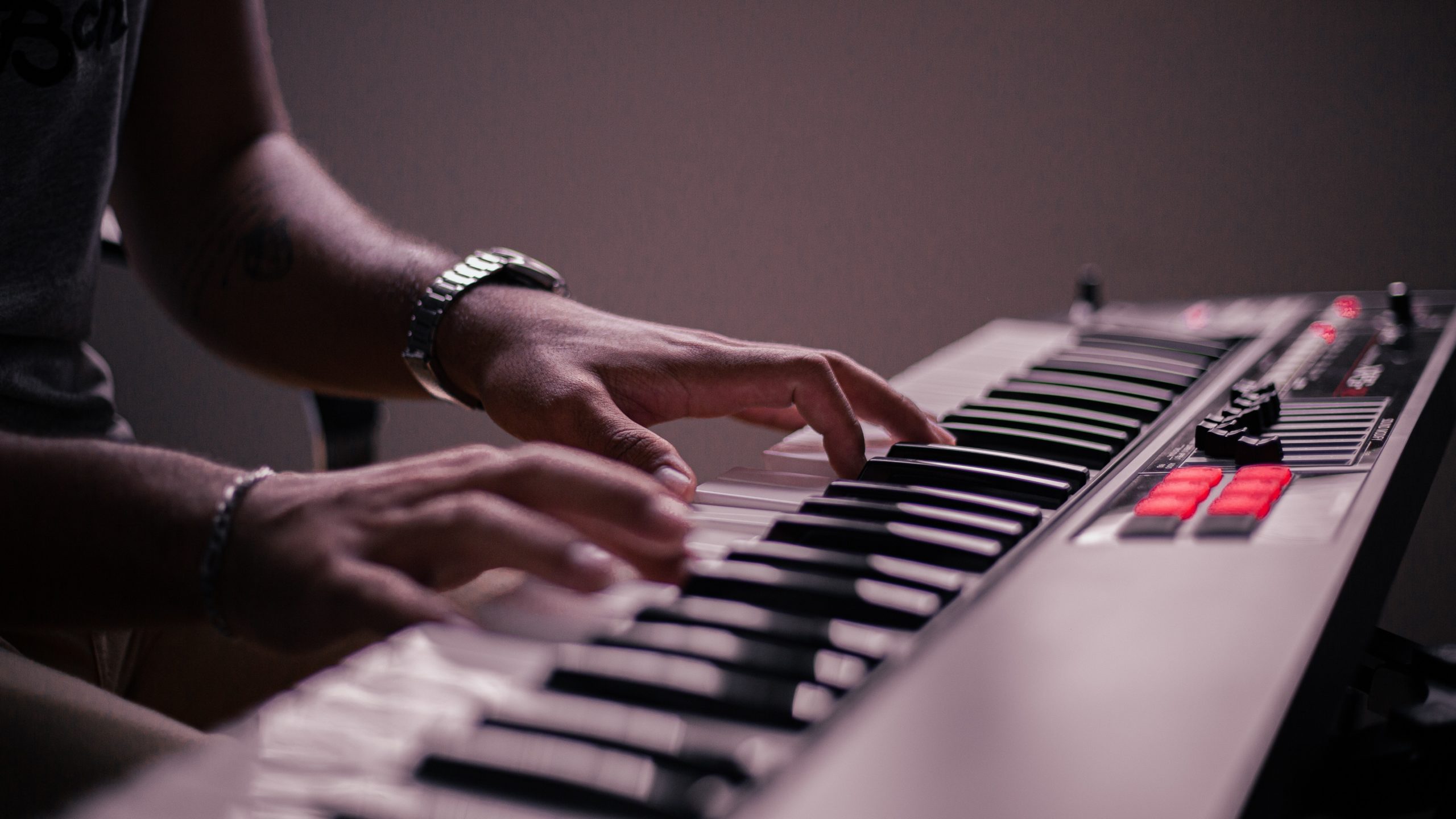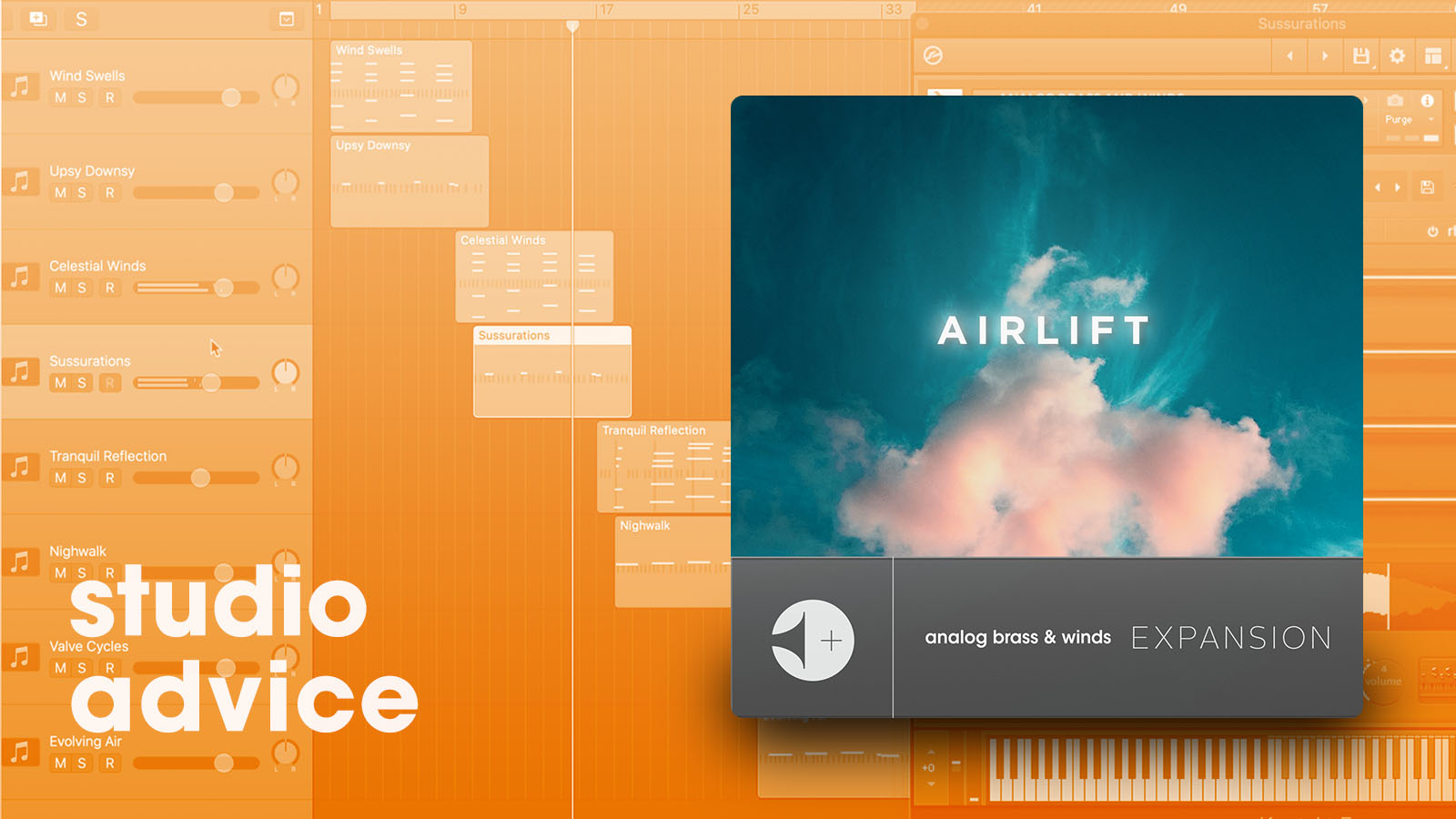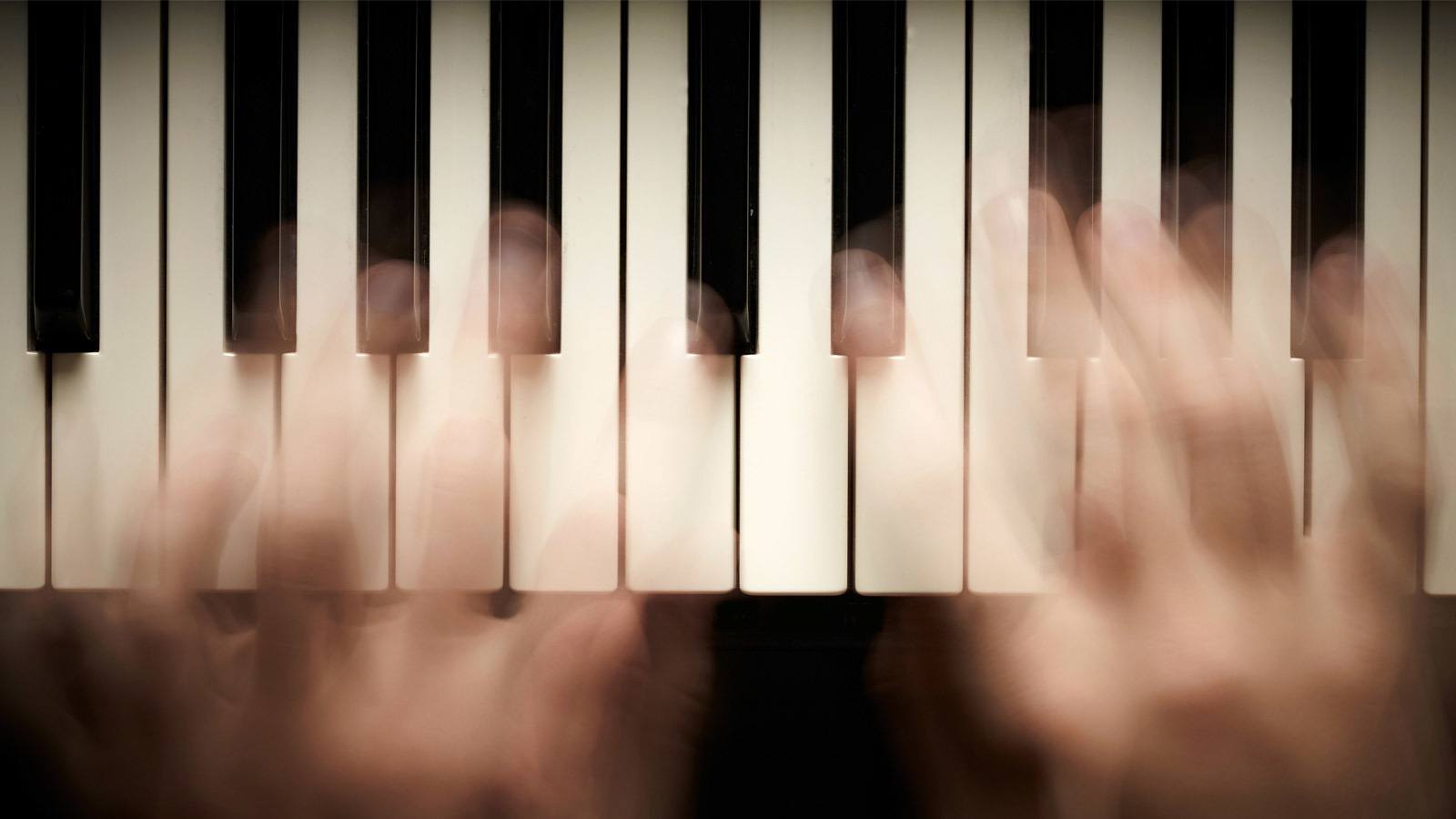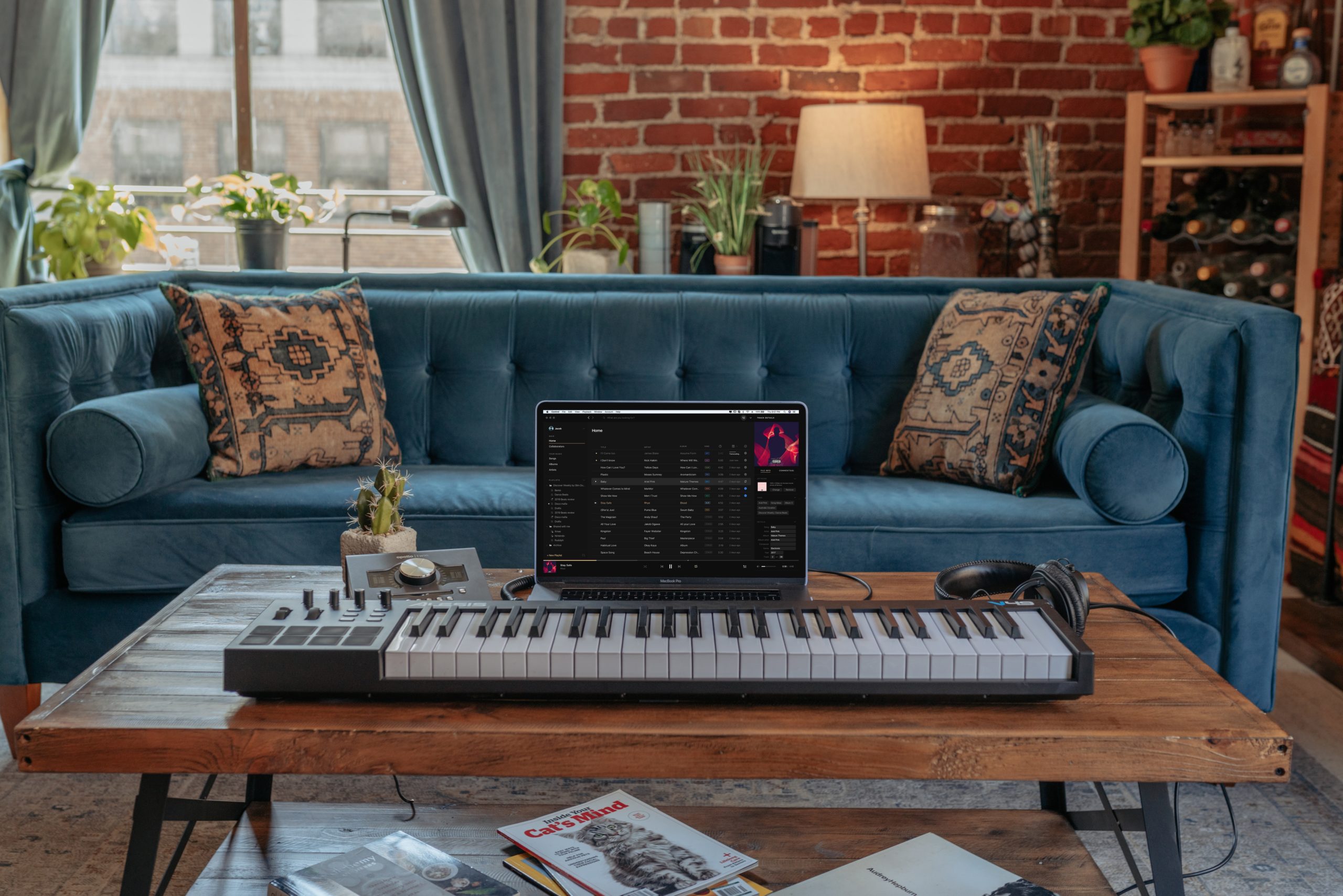
MIDI controllers are one of the first purchases in any home studio. Whether you’re just starting out or are a seasoned producer, figuring out how to buy a MIDI controller that’s right for you can be an overwhelming task.
Before we get into our guide, let’s touch on what a MIDI controller is. MIDI controllers come in all different styles and sizes. Quite simply: if a device’s primary or secondary function is to send MIDI data to another piece of hardware or software, that device can be considered a MIDI controller. They are most commonly keyboards, but can also be guitars, a drum machine with pads, or a wearable ring! Even fruit can be wired to a computer processor to become a MIDI controller.
A MIDI controller is the Swiss Army knife of your studio. It can play software instruments, program drums, control your digital audio workstation (DAW) transport, automate plugin parameters while mixing, and more. The right MIDI controller can streamline your production workflow and introduce you to new ways of arranging music that are harder to achieve by pointing and clicking on a screen.
No matter the form factor, all MIDI controllers work by sending “MIDI messages” to your computer. MIDI controllers themselves don’t make sounds — they trigger sounds to play in your Mac or PC, a plugin, or another piece of gear. Think of MIDI as sheet music in that each message relays information about how the note is played and what note is played but doesn’t contain audio.
For the purposes of this guide, we will mostly talk about MIDI keyboard controllers and pad/button controllers.
You don’t have to buy the most popular keyboard or whatever’s on sale at your local Guitar Center. After all, making music is a unique process for everyone. What works for one producer might not be the most useful to another.
If you travel for sessions, you might want a portable 25-key controller that you can shove in a backpack. But a composer who works from home might go for a full-size, 88-key model. If you aspire to the advanced production workflow of producers like 9th Wonder, you might opt-out of a keyboard entirely and focus on pad controllers like Maschine.
Now that we have that out of the way, here’s a guide for musicians on how to buy a MIDI controller that’s perfect for you.
1. Budget
As with most purchases, how much money you can spend can be the biggest factor that affects your decision. But, rest assured, there’s a diverse range of prices when it comes to MIDI controllers. How diverse? Is $30 to $3,000 a wide enough range? You can pay less than $100 for a basic and decent-sized keyboard, or upwards of $1,800 for a full-sized keyboard that mimics a real piano.
Things that generally affect the price of a MIDI controller are the number of keys, the type of keys, materials used, and extra features for live and performance use.
Higher price does not necessarily always translate to higher overall usefulness when it comes to MIDI controllers. But as with any music equipment, a higher price tag can mean better build quality and thus longevity, so keep that in mind when weighing your options. (And don’t forget to check out used gear marketplaces like Reverb; you never know where a sweet deal is waiting.)
Think about the maximum amount you want to spend and then as you read through this guide, keep track of the features most important to you. This will give you a framework to check against as you start thinking about what MIDI controller to buy.
If you’re shopping for your first MIDI controller — whether it is for production or to learn how to play a keyboard — a simple and low-cost controller will be adequate. Don’t feel pressured to drop more money than you’re comfortable with because of bells and whistles you might or might not use. (Seriously, go check out our list of the best affordable keyboard controllers.)
2. Size and number of keys
MIDI keyboards come in various sizes and typically feature keybeds with 25, 37, 49, 61, or 88 keys.
The number of keys you need depends on your use case. How you play is one consideration. A 25-key MIDI controller is fine for many producers who want to trigger samples or tap out a bassline. But a keyboardist who wants to play two-handed parts across octaves would be better off with the range that a 61 or 88-key MIDI controller provides. This is all to say, not everyone needs 88 keys.
Space is also a concern when thinking about the number of keys. Measure your desk, the interior of your suitcase, and any other space where the keyboard might frequently go. If you’re waffling between two different keybed sizes, this can help make the decision more clear.
Also, consider the keys themselves. They come in two different sizes: full-sized and mini. Most MIDI keyboard controllers have full-sized keys, which are comparable to the size of piano keys. But many small and portable options have mini keys. These are fine for sketching out simple ideas or making music on the go, but many find mini keys finicky and hard to play (especially if you have bigger hands or are a keyboard player first and foremost).
All keyboards, regardless of size, come with an octave switch. This lets you move the keybed up and down the note range. So no matter which MIDI keyboard you pick, you can play in any pitch.
3. How you make music
Take a moment to assess your own workflow: How do you actually make music? Do you generally start with drums, chords, or melodies? Are you writing original music or working with samples? Recognizing these things can help determine what MIDI controller is best for you.
If you come from a piano background, a small, 25-key controller might feel limiting. Look at larger keybeds with an extended range. You might also want semi-weighted or weighted keys to get as much expressivity as possible. (More on that later.)
Maybe you’re a ravemonger who likes clicking around the piano roll and using faders or knobs to control plugin parameters. If melodies that dance around octaves aren’t a primary concern, a 25- or 37-key controller with extra controls might be a good pick.
Fancy yourself a lo-fi or hip-hop producer who’s more focused on getting the swing just right with finger drumming? Look for a keyboard with built-in, velocity-sensitive drum pads. You can also forego a keyboard altogether for a dedicated beat pad controller. Responsive buttons are great for tapping out grooves and experimenting with patterns.
Where you create is also important. Consider whether this MIDI controller will live on your studio desk or travel with you. This is another place where durability comes into play. If other people will use the controller, consider investing in a model with a more durable build quality (for your own peace of mind).
For any producer, it’s generally a good idea to have a standard MIDI keyboard somewhere in your studio regardless of workflow. You never know when you’ll need one. It’s not a coincidence that many of the most popular controllers sport similar features like pitch and mod wheels, pads, knobs, and more, all of which can control various functions of your DAW. (Again, more on that later.)
But that brings us to…
4. Type of controller
When it comes to producing music, the MIDI keyboard is the most common controller for performing and recording virtual instruments and synthesizers. But there are a myriad of options beyond keyboards to suit every type of musician.
We mentioned beat pad controllers before, but in 2021 they generally fit in one of two categories: Integrated or generic. Integrated controllers pair specific hardware and software together. Generic controllers are hardware that can talk with a variety of software.
Native Instruments’ Maschine is an example of an integrated beat pad controller. Maschine lets you program beats on physical pads while the software counterpart runs on your computer. You can use the software as a standalone, but the point is to use it with the physical gear.
There’s also the Ableton Push 2, which is a pad-based controller built for Ableton Live. A high-resolution screen for chopping samples and tweaking sounds allows you to work on ideas without looking at your computer. It’s pricey, but for anyone who’s committed to Ableton Live, it can be game-changing for your workflow. DAW-specific MIDI controllers are worth considering if you’re already devoted to a particular software.
If you don’t want to be tied to specific software, there are plenty of generic beat pad controllers. Options like the Akai MPD226 or the PreSonus ATOM can directly map to different DAWs and other software. And if pads aren’t your thing, check out the MIDI Fighter by DJ Tech Tools, which uses genuine Sanwa arcade buttons. They’re not velocity-sensitive, but they do have a satisfying clickiness.
There are also MIDI controllers that recreate the feeling of playing traditional, non-keyboard instruments. A great example is the Jamstik Studio MIDI Guitar. It’s a fully functional electric guitar that also features a USB-C port for MIDI out. So, you can play any synth or software instrument in your DAW with a guitar. (Yep, strum a gnarly saw wave patch if you want.)
For brass and woodwind players, there’s the Roland Aerophone, a digital wind instrument that’s also a MIDI controller. The Aerophone has some wild features for the seasoned saxophonist. A built-in breath sensor lets you rip a sax solo and modulate it at the same time.
Also, remember that not all MIDI controllers are for playing or recording music. Some are solely for controlling your DAW or manipulating FX.
If you already have a MIDI keyboard but need more control over sound parameters, there are controllers that just have fiddly bits. The MIDI Fighter Twister by DJ Tech Tools has 16 rotary encoders with four banks for a total of 64 controls on one panel. The Studiologic SL Mixface is another great option. It has a dedicated transport bar, 9 large faders, and 8 knobs, giving you real-time access to full control of your keyboard using a DAW.
5. DAWs and software
The vast majority of MIDI controllers work with every digital audio workstation (DAW). So, you don’t have to worry about whether they’re compatible with Ableton Live, Logic Pro, Pro Tools, etc.
Thanks to partnerships between hardware manufacturers and software developers, some controllers are geared towards specific DAWs. These come bundled with additional software and firmware to make communication with the DAW more plug and play.
For example, the Nektar’s LX+ keyboard series comes with Nektar DAW Integration, which lets you work in Logic Pro, Cubase, FL Studio, Reason, Garageband, and other popular DAWs without having to make templates. Novation’s latest LaunchKey series is built to work with Ableton Live from the ground up, with physical controls to match the software experience. It will work perfectly fine with other DAWs, just not as seamlessly as it does with Ableton Live.
And as mentioned earlier, some controllers only work with specific DAWs or software, like the Ableton Push 2.
The software you already use can play a huge role in what you ultimately pick, so pay attention to what controllers play nice with it.
6. Knobs, faders, pads, and buttons
Extra MIDI controls — knobs, faders, touch strips, wheels, pads, buttons — vary from controller to controller. The reason to keep your workflow in mind when considering your purchase is that your controller can, in turn, shape and improve your workflow. These kinds of features can add additional layers of automation and expression to your music both as you work and in live performance.
If you want controller knobs, there are two different kinds: pots (potentiometers) and rotary encoders. Pots are knobs with a 270 degree range and are great to control things that generally don’t dynamically change, like volume. Rotary encoders are knobs that can turn infinitely in either direction and are better suited for automated parameters that can change a lot over time, like LFO or resonance.
Also consider that not all knobs are created equal. Mini-size or cheaper controllers may have shallower knobs that are functional, but awkward to use. Knobs can also be too close together for your liking and feel uncomfortable.
Although faders and knobs effectively do the same thing, they’re intuitively used for different purposes. In your DAW, faders control the volume of your tracks. You can use the corresponding physical faders on your MIDI controller to quickly make adjustments as you mix. The larger the physical fader, the greater degree of control you have.
Most keyboard controllers have standard pitch and modulation wheel controls, although some compact and budget models do away with wheels for touch bars or pressure-sensitive buttons. These are to modulate a sound when playing a keyboard. Play with one hand, move the wheel with the other.
Many software synths offer immediate options for what the mod wheel can control (like an LFO), making it useful when you’re trying to record lively synth parts. Check out producer Haywyre showing off what pitch and mod wheels can add to a performance:
Beat pads are obviously most useful in programming drums or chopping samples, but like any other controls, they are programmable. So even if you’re not using pads to trigger samples, they can be used as general buttons to turn tracks on and off, trigger different Ableton Live scenes, and so much more.
An underrated aspect of any prospective MIDI keyboard is the transport bar. What is a transport bar? It’s your set of dedicated playback controls: play, pause, rewind, record, etc. With a physical transport bar you can press record on your keyboard instead of mousing around on the computer. This can be a real time-saver in the long-run, especially as you’re writing or getting a new idea down.
7. Key weight
Most MIDI keyboard controller keys fall into one of three categories: Synth-action, semi-weighted, and fully-weighted. Exactly how the keys feel, regardless of category, varies by manufacturer. None of these are necessarily better than the others — they just have different use cases.
Synth-action keys are the most common type of key. They’re spring-loaded, meaning they bounce back quickly when depressed. This makes synth-action keys an ideal choice for keyboardists who play a lot of leads, or producers who like to program drums by tapping out samples.
Because there’s barely any resistance to playing a synth-action key, they’re easy to play quickly and hit double notes with. You’ll see them most often on smaller and less-expensive MIDI controllers.
Semi-weighted keys are a slight step up in weight from synth action. They usually feel “blockier” and have more heft, making them a natural fit for anyone accustomed to playing an actual piano. If synth action key feel too “cheap” to play, semi-weighted keys offer a good alternative.
The exact character of a semi-weighted keybed is particular to the given manufacturer and controller. Usually, you’ve got to try them to know if they feel good to you.
Weighted keys try to fully replicate the experience of playing a traditional piano, giving players the full range of expressive control you’d expect from the instrument. The people who would benefit most from fully-weighted keys are dedicated piano players and film composers.
Fully-weighted keyboards are usually larger and more expensive, although you get what you pay for. Weighted keys are harder to find on controllers with less than the full 88 keys, because they cater to the serious pianist.
8. Aftertouch
Aftertouch is a feature you usually find on higher-end controllers, as well as MPE-enabled controllers like the ROLI Seaboard. It’s a little sensor strip in the keybed that detects pressure. Aftertouch is triggered when you press a key all the way down and then press a little harder.
You can use aftertouch to control things like vibrato or filter cutoff for more expressive performances. In the case of the ROLI Seaboard, specific actions like wobbling your finger from side to side when pressing a key can change a sound. Essentially, aftertouch lets you play on a keyboard with both your hands and modulate additional parameters without adjusting a knob or wheel, or fader.
There are two kinds of aftertouch: monophonic (or “channel pressure”) aftertouch, which responds across the entire instrument being played, or polyphonic aftertouch, which responds on a per-key basis.
For example: If you play a three-note chord on a keyboard controller with monophonic aftertouch and lean on one note, the whole chord is affected. With polyphonic aftertouch, only that one note is affected. If you’re a total beginner looking for your first controller, do you absolutely need aftertouch? Probably not.
Synth pros and expert keyboardists are also divided on its benefits. Aftertouch can add depth and movement to your sounds, but some say it can be accidentally triggered or difficult to control when playing on a fully-weighted keyboard. If you’ve been producing for some time or you are looking for an upgrade for your current gear, aftertouch can be a cool feature to add to your toolbox.
9. I/O (inputs/outputs)
For most users, the inputs and outputs on a MIDI controller are less important than they are for other equipment like audio interfaces. This is because almost all modern MIDI controllers use USB to send MIDI data to your computer. Any non-USB I/O that comes with a given MIDI controller will vary by manufacturer.
Full-sized MIDI keyboards generally include a 1/4-inch sustain pedal input. If you are a piano or keyboard player, make sure any controller you consider has a sustain input.
Some MIDI controllers come with standard 5-pin MIDI inputs and outputs. You can use these to play and control hardware synthesizers and other devices down the line. MIDI outputs also allow you to use your controller with compatible, non-computer instruments.
Other MIDI controllers also include separate control voltage (CV) and gate outputs. These outputs convert MIDI information into electric signals, which can manipulate modular synthesizers and other analog gear. CV/gate-capable MIDI controllers like the Arturia Keystep can bridge the gap between your hardware and software with ease.
For a better sense of your affordable MIDI keyboard options, check out our list of the 10 best MIDI keyboard controllers under $300.
